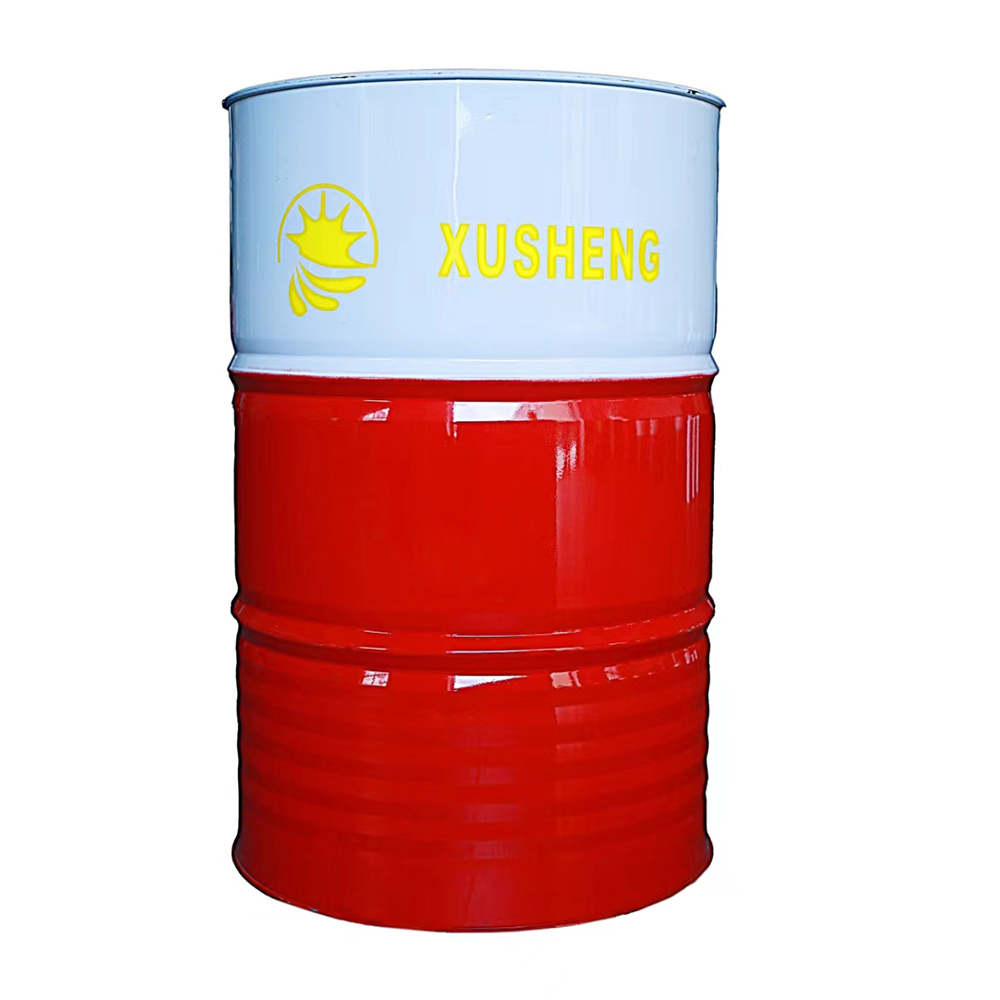
Long-life energy-saving heat transfer oil 300
产品应用:长寿节能型导热油300 为非矿物油型传热油, 氢化合成导热油为矿物型导热油的替代产品, 不含无机物, 热传导效率高。 并且具有良好的抗结焦性和防止积碳产生。 拥有杰出的热稳定性, 高温作业下也可以保障数年的可靠运行。 具有矿物油型产品难以比拟的特性, 其寿命约为矿物型导热油的 2 至 3倍之上。 品质符合国国家标准 GB/T23971 标准规范。
产品介绍
Performance advantages:
1. Suitable viscosity: Low viscosity heat transfer medium is conducive to achieving high heat transfer coefficient under turbulent state, and has good pumpability at low temperature, making the pumping device easy to start.
2. Higher specific heat and thermal conductivity, which is conducive to obtaining higher thermal efficiency.
3. Excellent high and low temperature performance and excellent viscosity-temperature characteristics: viscosity changes little with temperature, low temperature fluidity is good, flash point and auto-ignition point are high, thermal decomposition temperature is high, can meet the use requirements of the maximum use temperature of 320℃, has flame retardancy, and allows a maximum film temperature of 350℃.
4. Excellent chemical stability and thermal stability, with extremely low volatility, good thermal oxidation stability, long service life, about 2 to 3 times longer than that of mineral heat transfer oil.
5. Good radiation resistance and adaptability to rubber seals.
Main uses:
Heat transfer oil is suitable for heating or heat removal systems in chemical fiber polyester, silicone, silicon crystal silicon, pesticide medicine, and fine chemical industries, and liquid phase heat transfer systems not higher than 320℃. It is prohibited to use in open systems such as mold temperature controllers and printing machines.
Precautions:
1. It should be stored indoors. If stored outdoors, it should be kept horizontally to avoid water infiltration and the obliteration of the mark on the barrel.
2. This product is forbidden to be mixed with water and foreign matter, otherwise it will cause the oil to deteriorate and become invalid.
3. It is not recommended to mix with other oils to prevent performance deterioration.
Typical data:
project | parameters |
Appearance | Light yellow transparent liquid |
Density 20℃ Kg/m3 | 895~915Kg/m3 |
Viscosity/40℃ mm²/s | 28-32 |
Flash point ℃ | >180℃ |
Autoignition point℃ | >320℃ |
Pour point ℃ | -28 |
Long-life energy-saving heat transfer oil 300
{/pboot:if} {pboot:if('Performance advantages:
1. Suitable viscosity: Low viscosity heat transfer medium is conducive to achieving high heat transfer coefficient under turbulent state, and has good pumpability at low temperature, making the pumping device easy to start.
2. Higher specific heat and thermal conductivity, which is conducive to obtaining higher thermal efficiency.
3. Excellent high and low temperature performance and excellent viscosity-temperature characteristics: viscosity changes little with temperature, low temperature fluidity is good, flash point and auto-ignition point are high, thermal decomposition temperature is high, can meet the use requirements of the maximum use temperature of 320℃, has flame retardancy, and allows a maximum film temperature of 350℃.
4. Excellent chemical stability and thermal stability, with extremely low volatility, good thermal oxidation stability, long service life, about 2 to 3 times longer than that of mineral heat transfer oil.
5. Good radiation resistance and adaptability to rubber seals.
Main uses:
Heat transfer oil is suitable for heating or heat removal systems in chemical fiber polyester, silicone, silicon crystal silicon, pesticide medicine, and fine chemical industries, and liquid phase heat transfer systems not higher than 320℃. It is prohibited to use in open systems such as mold temperature controllers and printing machines.
Precautions:
1. It should be stored indoors. If stored outdoors, it should be kept horizontally to avoid water infiltration and the obliteration of the mark on the barrel.
2. This product is forbidden to be mixed with water and foreign matter, otherwise it will cause the oil to deteriorate and become invalid.
3. It is not recommended to mix with other oils to prevent performance deterioration.
Typical data:
project | parameters |
Appearance | Light yellow transparent liquid |
Density 20℃ Kg/m3 | 895~915Kg/m3 |
Viscosity/40℃ mm²/s | 28-32 |
Flash point ℃ | >180℃ |
Autoignition point℃ | >320℃ |
Pour point ℃ | -28 |

Performance advantages:
1. Suitable viscosity: Low viscosity heat transfer medium is conducive to achieving high heat transfer coefficient under turbulent state, and has good pumpability at low temperature, making the pumping device easy to start.
2. Higher specific heat and thermal conductivity, which is conducive to obtaining higher thermal efficiency.
3. Excellent high and low temperature performance and excellent viscosity-temperature characteristics: viscosity changes little with temperature, low temperature fluidity is good, flash point and auto-ignition point are high, thermal decomposition temperature is high, can meet the use requirements of the maximum use temperature of 320℃, has flame retardancy, and allows a maximum film temperature of 350℃.
4. Excellent chemical stability and thermal stability, with extremely low volatility, good thermal oxidation stability, long service life, about 2 to 3 times longer than that of mineral heat transfer oil.
5. Good radiation resistance and adaptability to rubber seals.
Main uses:
Heat transfer oil is suitable for heating or heat removal systems in chemical fiber polyester, silicone, silicon crystal silicon, pesticide medicine, and fine chemical industries, and liquid phase heat transfer systems not higher than 320℃. It is prohibited to use in open systems such as mold temperature controllers and printing machines.
Precautions:
1. It should be stored indoors. If stored outdoors, it should be kept horizontally to avoid water infiltration and the obliteration of the mark on the barrel.
2. This product is forbidden to be mixed with water and foreign matter, otherwise it will cause the oil to deteriorate and become invalid.
3. It is not recommended to mix with other oils to prevent performance deterioration.
Typical data:
project | parameters |
Appearance | Light yellow transparent liquid |
Density 20℃ Kg/m3 | 895~915Kg/m3 |
Viscosity/40℃ mm²/s | 28-32 |
Flash point ℃ | >180℃ |
Autoignition point℃ | >320℃ |
Pour point ℃ | -28 |







